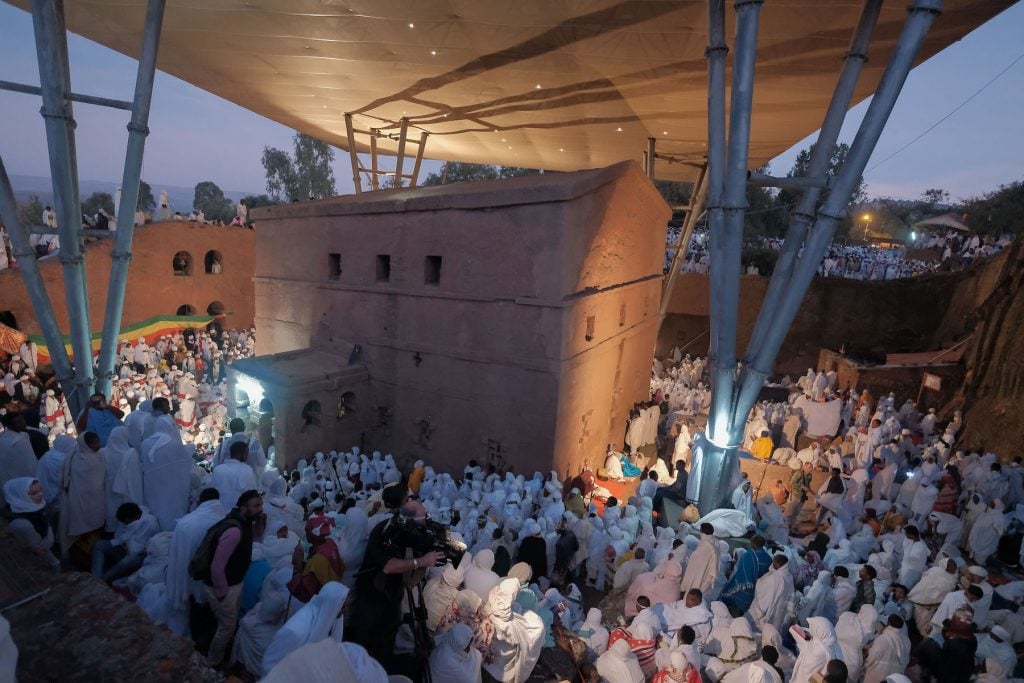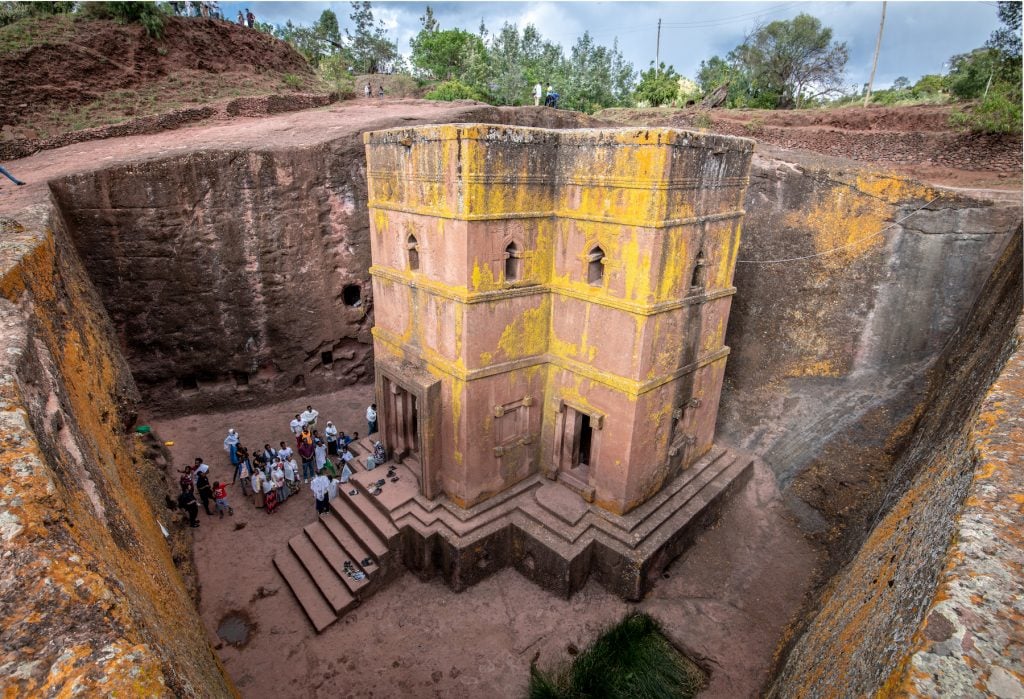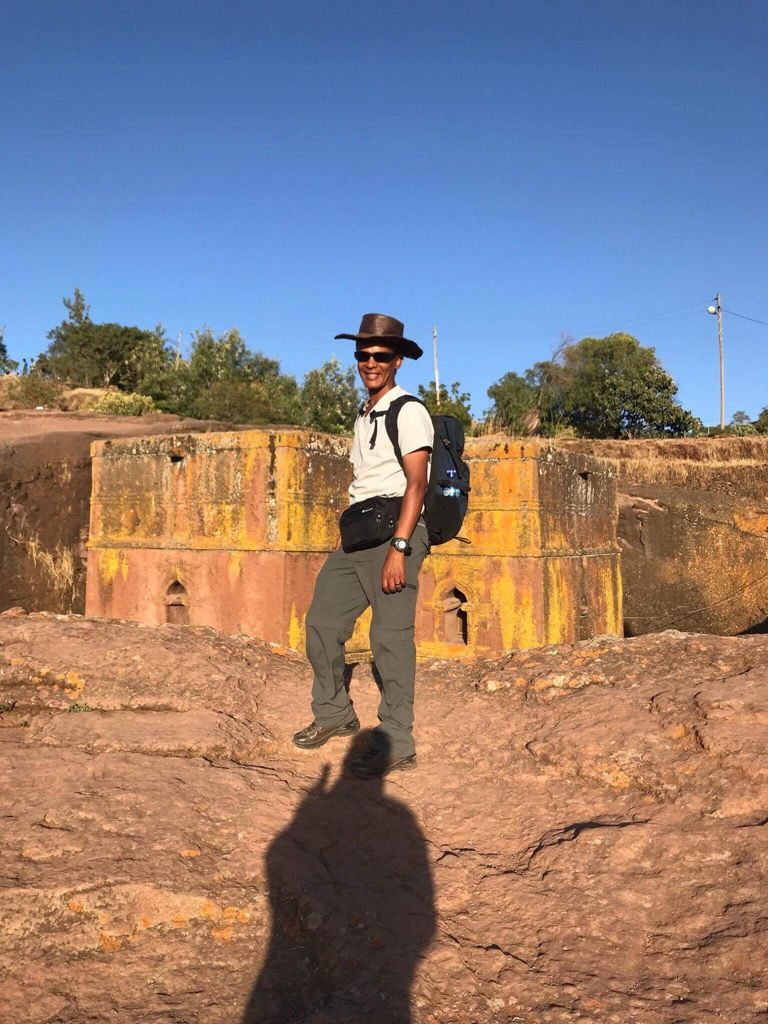Op-Ed
The World Cannot Stand by While Lalibela Becomes the Next Cultural Heritage Site Consumed by Conflict
The UNESCO World Heritage site in Ethiopia has been described as having been "built by angels." Conflict is putting it at risk.

The UNESCO World Heritage site in Ethiopia has been described as having been "built by angels." Conflict is putting it at risk.

Dawit Yehualashet

In 2015, the world looked on in horror as the terror group Daesh (ISIS) brought their war to the ancient site of Palmyra. The group proceeded to destroy tombs and temples which have stood for centuries. In addition to these deliberate and barbaric acts, the city was further damaged in the fighting. Even during their retreat, Daesh took the time to blow up parts of the 13th century Palmyra Castle. Despite recent hopes of restoration, around 20-30 percent of the site was severely damaged. Nearly a millennium of history and cultural heritage has been torn down.
In Ethiopia, a similar travesty could be about to occur. Recently, even as the media’s attention was fixated on events in Afghanistan, the Tigray People’s Liberation Front (TPLF) moved out of the Tigray region and seized the town of Lalibela in Amhara region. Leaving to one side that this is a blatant act of aggression following the Ethiopian Government’s attempts to secure a ceasefire, the TPLF is threatening a UNESCO World Heritage site with conflict. The risk of damage to and even the destruction of Lalibela cannot be overstated.
The town is home to some of the greatest cultural, historical, and religious treasures not just in Ethiopia and Africa, but in the world. In terms of significance within Christendom, its rock-hewn churches dating from the 12th and 13th centuries are on par with the Church of the Holy Sepulchre and the Vatican. They have an historic importance similar to the surviving parts of Palmyra and the famous sites of Ancient Rome. Indeed, the churches are so sacred that when restoration work was last conducted, even the dust from the bricks had to be protected.

Rock hewn monolithic church of Bet Giyorgis (Church of St. George) in Lalibela , Ethiopia. Photo by Edwin Remsberg / VWPics/Universal Images Group via Getty Images.
Lalibela is unlike any other place on the face of Earth. I have visited the town more than 100 times over a span of 22 years and every time I set my foot there, it is a glimpse of beauty that nearly stops my breath. It is one of humanity’s most extraordinary achievements. It is the site of our greatest and most iconic heritage.
Lalibela is a pinnacle of the Ethiopian renaissance—a living embodiment of our faith and a testament to our perseverance. Its monolithic edifices are the ultimate expression of the Ethiopian “Tewhaedo” doctrine. In the words of a couplet by the 17th century German historian Ludolf, “By vast expense and hideous pain, the rock a church became.”
There are some things you just do not abandon. Lalibela transcends military strategy and political squabbles. It is well beyond those human affairs. It is a world unto itself.

Dawit Yehualashet in Lalibela. Photo courtesy Dawit Yehualashet.
Here is how CBS correspondent Scott Pelley put it, “If faith is a mystery, there are few places in the Christian world where the mystery is deeper than in Lalibela. 800 years ago, an Ethiopian king ordered a new capital for Christians. At 8,000 feet, on the central plateau of Ethiopia stand 11 churches, each carved from a single, gigantic block of stone. No bricks, no mortar, no concrete, no lumber, just rock sculpted into architecture. Not much is known about who built them, or why. But the faithful of the Ethiopian Orthodox Church say there’s no mystery really. The churches of Lalibela were built by angels.”
Earlier this month, UNESCO has said: “Lalibela is a place of pilgrimage, devotion and peace: it should not be a place for instigating violence and conflict.” By leaving their own region, TPLF insurgents have needlessly brought war to this holy place. There is no excuse for risking sites of such historical, cultural, and religious significance for narrow and personal gain.
The only way to avoid any damage to Lalibela is for the TPLF to immediately withdraw and agree to a ceasefire—one that was offered by the Ethiopian Government before the insurgents unilaterally continued the conflict.
Dawit Yehualashet is an Ethiopian travel specialist, residing in Silver Spring, Maryland. His academic work, focusing on inter-communal peace studies, was part supported by the International Peace Research Foundation and has been published by the Journal of Religion, Conflict, and Peace, among others.